Smooth Sumac, Scarlet Sumac - Rhus glabra
|
Rhus glabra - Smooth Sumac, Scarlet Sumac.
Rhus - Sumac - is a small genus of about 35 species of shrubs, small trees, and lianas native to Eurasia, North America, and northern Central America. Between 14 and 20 of those are found in North America, depending on the classification to which you subscribe. Flora of China says there are about 250 species in the genus; since that reference was written, the genus has been reclassified into multiple genera. As an example, the 60 African species formerly included in Rhus are now classified in the genus Searsia. It should be noted that the Sumac family - Anacardiaceae - not only includes Poison Ivy and Poison Sumac (Toxicodendron vernix, no longer classified within the Rhus genus), it also includes the valuable Cashew, Pistachio, and Mango plants.
Rhus glabra is the most widely distributed species of Sumac in North America, found in each of the lower 48 states, although its presence in California is questioned. It is also found in most of Canada. It is most commonly seen along roadsides and in other areas that have been cleared but are being allowed to be overgrown. It is less commonly found in open woods. It is a shrub or small tree which usually blooms May to August, with the more conspicuous red seedheads showing up shortly after blooming.
Found in:
AL, AK, AR, AZ, CA, CO, CT, DC, DE, FL, GA, HI, IA, ID, IL, IN, KS, KY, LA, MA, MD, ME, MI, MN, MO, MS, MT, NC, ND, NE, NH, NJ, NM, NV, NY, OH, OK, OR, PA, RI, SC, SD, TN, TX, UT, VA, VT, WA, WI, WV, WY, GS
Leave comments on Rhus glabra at this link. | 
Distribution of Rhus glabra in the United States and Canada:
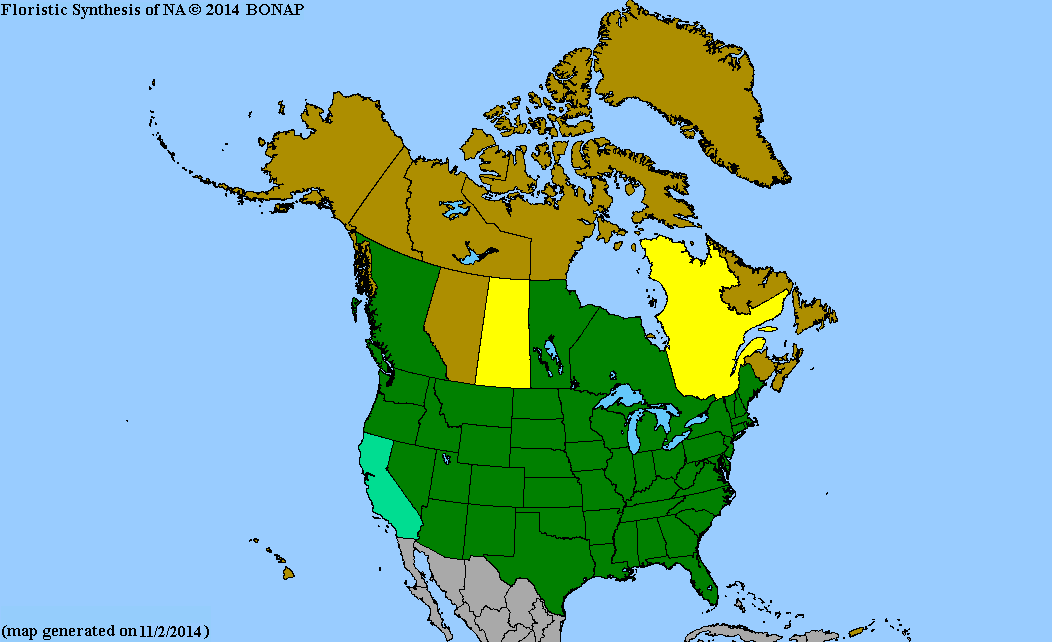
Map courtesy of The Biota of North America Program.
Map color key
Search Our Database: Enter any portion of the Scientific, Common Name, or both.
Do a general Google search of the entire site:
#ad
 Follow USWildflowers on Twitter
#ad
| | Site: Walker County, GA Date: 2019-June-24 | Photographer: Gerald C Williamson | | The inflorescence of Rhus glabra is a panicle, with the branches of the inflorescence containing many petioled flowers. The flowers are greenish-white to pale yellow. The pistillate and staminate flowers are on separate plants (dioecious), with the staminate inflorescences being less compact than the pistillate inflorescences. | | 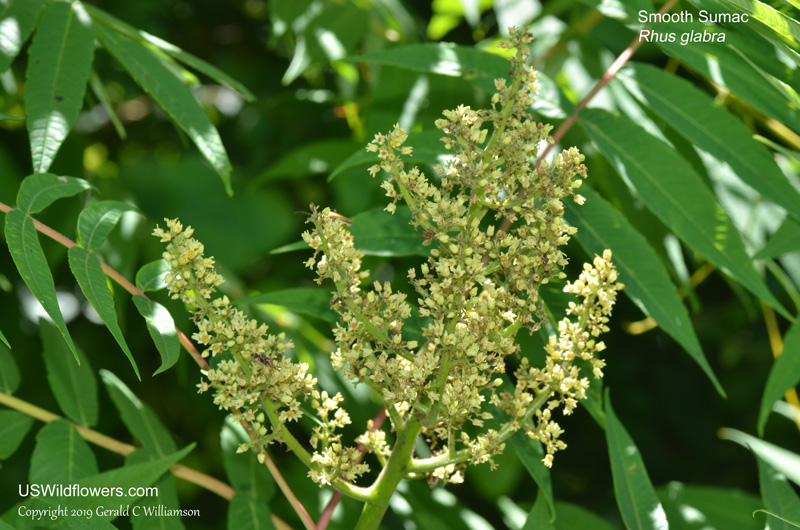
| | Site: Walker County, GA Date: 2019-June-24 | Photographer: Gerald C Williamson | | The flower of Smooth Sumac has 5 petals, which may be somewhat hairy. Unlike the rest of the Rhus glabra plant, the stems of the inflorescence may be somewhat hairy as well. | | Click on the photo for a larger image
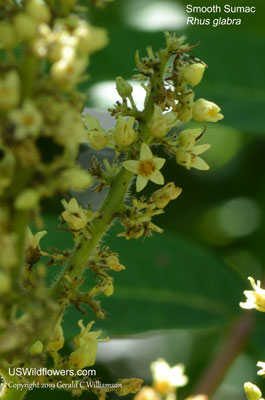
| | Site: Walker County, GA Date: 2010-August-04 | Photographer: Gerald C. Williamson
Nikon D60
| | Since the flowers are fairly inconspicuous, it is the compact cluster of bright red berries that most people notice. The cluster is up to about 10 inches long. The seeds, each about 1/8 inch in diameter, are technically drupes, and have fine, appressed hairs (versus Staghorn Sumac, Rhus typhina, which have spreading hairs giving them a very fuzzy appearance.) The drupes of both Rhus glabra and Rhus typhina have been used to make a refreshing drink. | | Click on the photo for a larger image
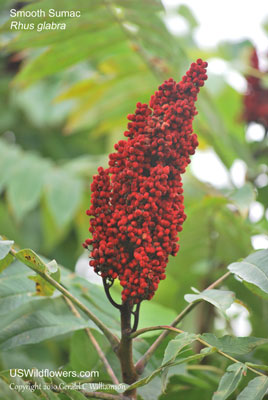
| | Site: Walker County, GA Date: 2019-June-24 | Photographer: Gerald C Williamson | | The leaf of Smooth Sumac is pinnately compound with 11 to 31 leaflets. The leaflets and rachis are glabrous, sometimes glaucous. The underside of the leaflet may also be glaucous. The leaflets are narrowly lanceolate to oblong, with a rounded or cuneate base, serrate margins, and acuminate tip. They are up to about 6 inches long. The leaflets will turn a deep red in early fall. | | Click on the photo for a larger image
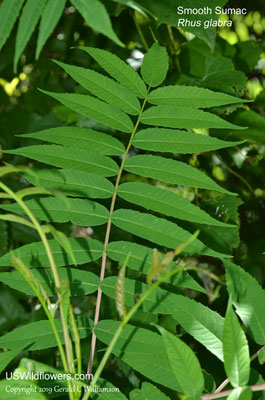
| | Site: Walker County, GA Date: 2010-August-04 | Photographer: Gerald C Williamson | | Smooth Sumac is a shrub or small tree, growing to about 15 or 20 feet tall. | | Click on the photo for a larger image
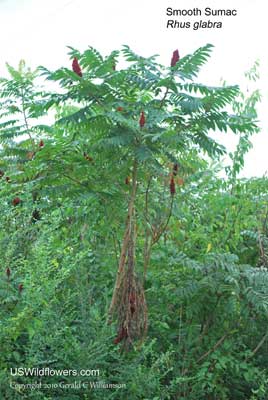
| | Site: Dade County, GA Date: 2016-August-08 | Photographer: Gerald C Williamson | | Rhus glabra plants spread by root suckers and thus can grow close together, forming thickets. It is considered weedy by some. The twigs are glabrous, and younger growth may be glaucous. | | Click on the photo for a larger image
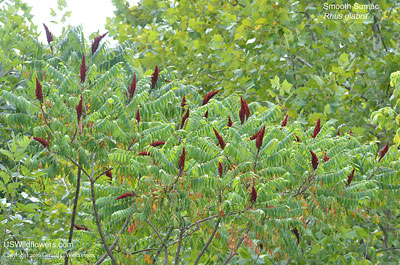
|
References used for identification and information:
|
|
| |
| #ad
|
|








